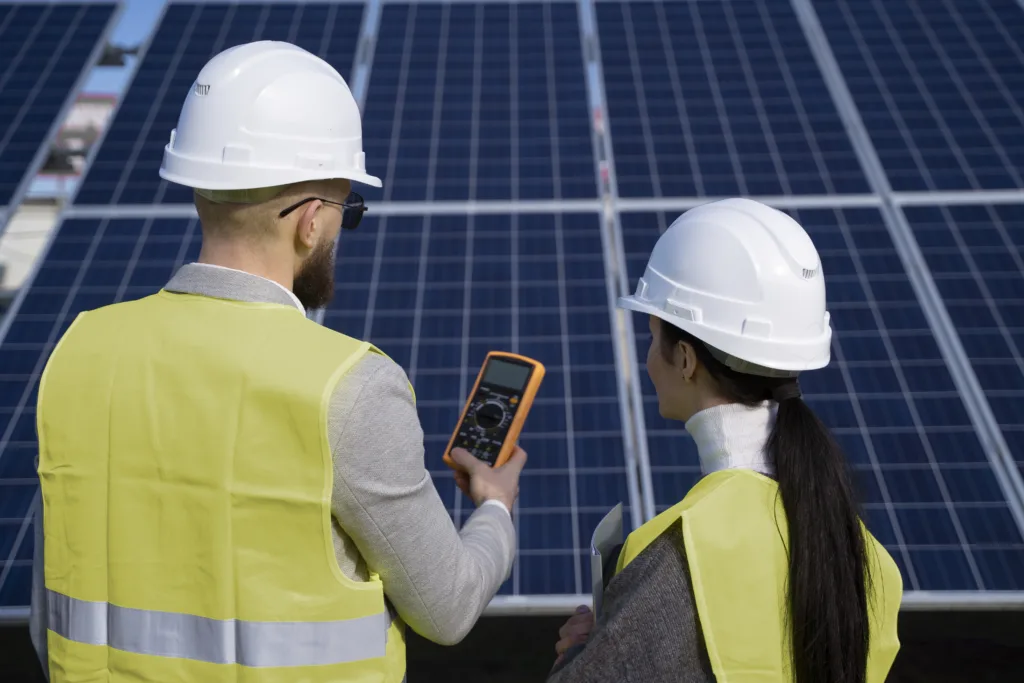

Process 1
Process 2


Process 3
Particularly in the hot Australian climate, solar inverters are prone to overheating because they generate their own heat. A Fronius inverter, for example, has a built-in fan for cooling, which can significantly increase the lifespan of your inverter. Additionally, it’s crucial to make sure your inverter is adequately shielded from direct sunlight during the day in order to maintain effective AC power output.
An inverter may arc as a result of loose connections and wiring. A release of electrical energy known as an electrical arc can result in an explosion or fire. Your inverter will run more safely and effectively if connections are checked and tightened frequently.
A panel may be broken by falling debris or tree branches, causing obvious damage that would necessitate panel replacement. Strong weather conditions, such as wind, hail, or lightning, can nonetheless result in minor external damage to solar panels, which can then lead to internal structural problems that are harder to spot but have a significant impact on a panel’s overall output.
As the sun shines on solar panels, electric current is produced. Any flaws in the solar panel, such as a heavy accumulation of dirt and leaves, microcracks, or improperly soldered joints, can lead to an uneven distribution of heat and the emergence of hot spots. These can eventually ignite a fire and leave “burn marks” on the panel.
If your solar panels are tilted, a heavy downpour will help to rinse everyday grime and dirt from them. However, rain won’t wash away dried-on animal droppings, heavy dirt, or leaves, just like it won’t make your car spotless. Since water won’t naturally drain from flat panels, regular cleaning is necessary. Cleaning can decrease hotspots and microcracks in any system, increase lifespan, and improve overall performance.



Suzlon Group Pty. Ltd.
Suzlon Solar is one of the leading solar energy provider company in Australia. We specialize in high quality yet affordable renewable energy products for either your home or business.
6.6 kW
10.3 kW
13.2 kW
15 kW
19.09 kW
20 kW
30 kW
50 kW
100 kW
Solar Panel
Solar Inverter
Solar Batteries
EV Charger
Home
About Us
Contact Us
Residential Solar
Commercial Solar
Make A Payments
Refer A Friend & Earn
Finance
Blog
FAQ
Warranty
User Guide
Privacy Policy
Calculate Solar Savings
Repair And Maintenance
Complaints Handling
Terms and Conditions
Suzlon Group Pty. Ltd.
Suzlon Solar is one of the leading solar energy provider company in Australia. We specialize in high quality yet affordable renewable energy products for either your home or business.
6.6 kW
10.3 kW
13.2 kW
15 kW
19.09 kW
20 kW
30 kW
50 kW
100 kW
Solar Panel
Solar Inverter
Solar Batteries
EV Charger
Home
About Us
Contact Us
Residential Solar
Commercial Solar
Make A Payments
Refer A Friend & Earn
Finance
Blog
FAQ
Warranty
User Guide
Privacy Policy
Calculate Solar Savings
Repair And Maintenance
Complaints Handling
Terms and Conditions
All Rights Reserved © 2023 Suzlon Solar.
Powered by VK Graficos Ltd.
